ESCAPE
Ancient adventures — discovering early Earth on a trip to the Makhonjwa Mountains
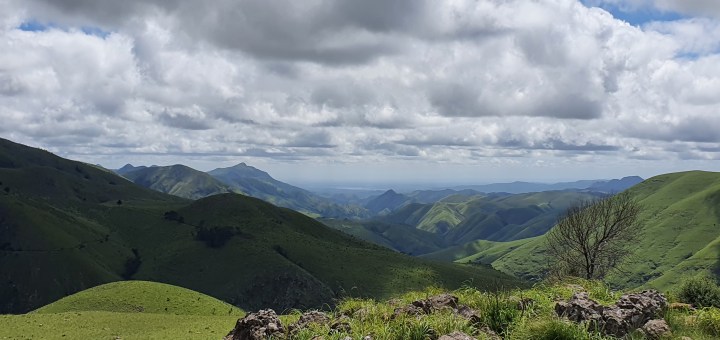
Bridget Hilton-Barber and her road tripster buddy Hugh Fraser set off on a journey to take in unique sights that speak of events that took place billions of years ago. It leads them straight to Barberton in Mpumalanga.
In the beginning, long before rolling blackouts, there was darkness.
This was the Hadean Eon about 4.6 billion years ago, when the Earth’s mantle and crust and its inner and outer core took shape in a fiery embryo. Then came the Archaean Eon, about four billion years ago, when the continents formed through impossibly outrageous seismic activity.
Think massive meteorite impacts, bigger than the one that killed off the dinosaurs, wild lightning storms and giant balls of molten lava. The young oceans cooled, cracking the Earth’s rocks, and through a complex chemical process transformed carbon-containing molecules into simple living cells – single-cell bacterial structures that would be the fundamental nucleus from which all animal and plant life evolved; hello, Archaeospheroides barbertonsis.
There is evidence of these very first single-cell bacteria in the Makhonjwa Mountains World Heritage Site, the mountains that loom above the town of Barberton. There is no other place in the world, says Unesco, where scientists can recover as much information about this important formative period in Earth’s history.
We kicked off our adventure at Bushwhacked Barberton, a charming rustic spot just above the town. We met owner Catherine Wilson, who regaled us with tales of visiting geologists, scientists from Nasa, filmmakers, and a guest who came for a night and stayed 18 months.
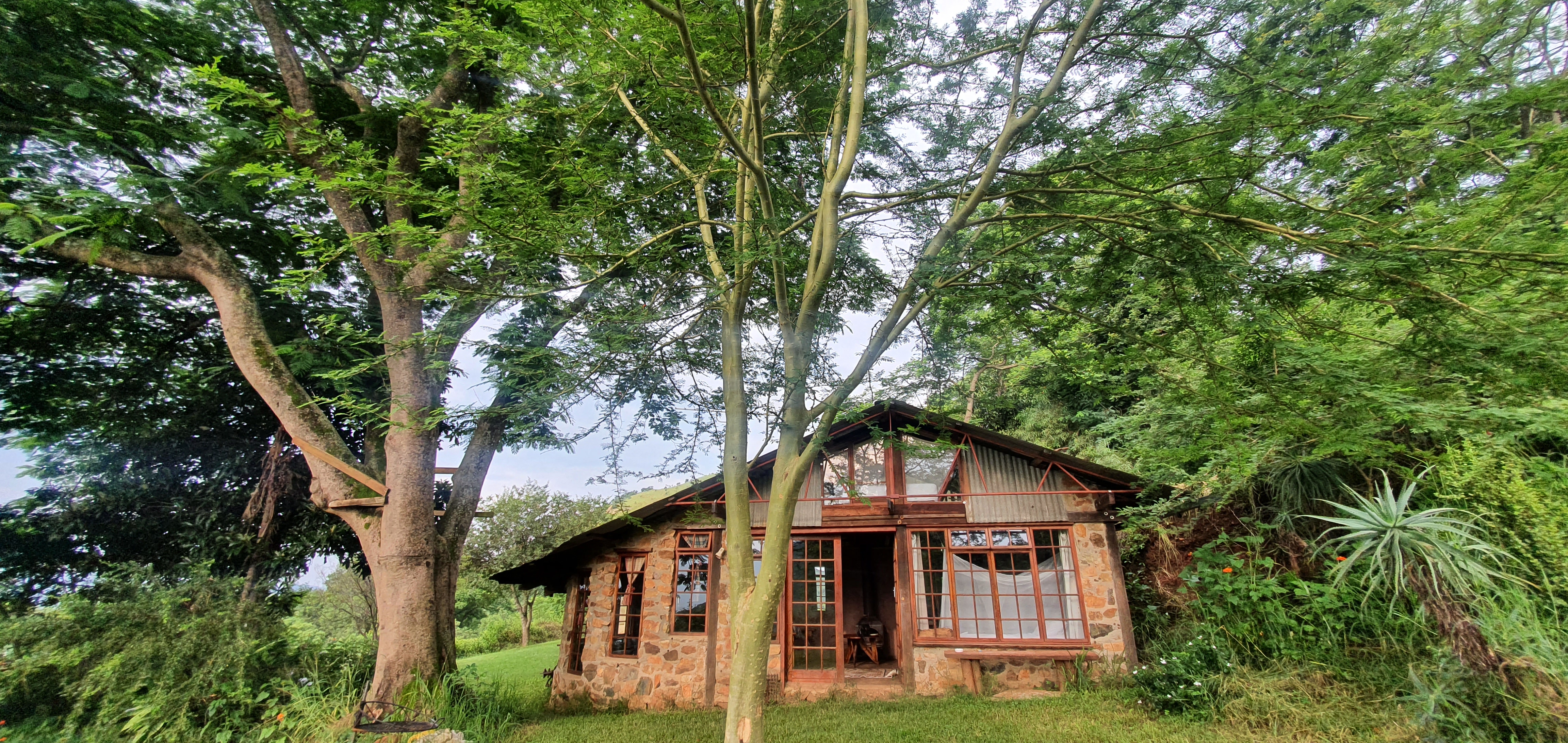
Bushwhacked accommodation. (Photo: Bridget Hilton-Barber)
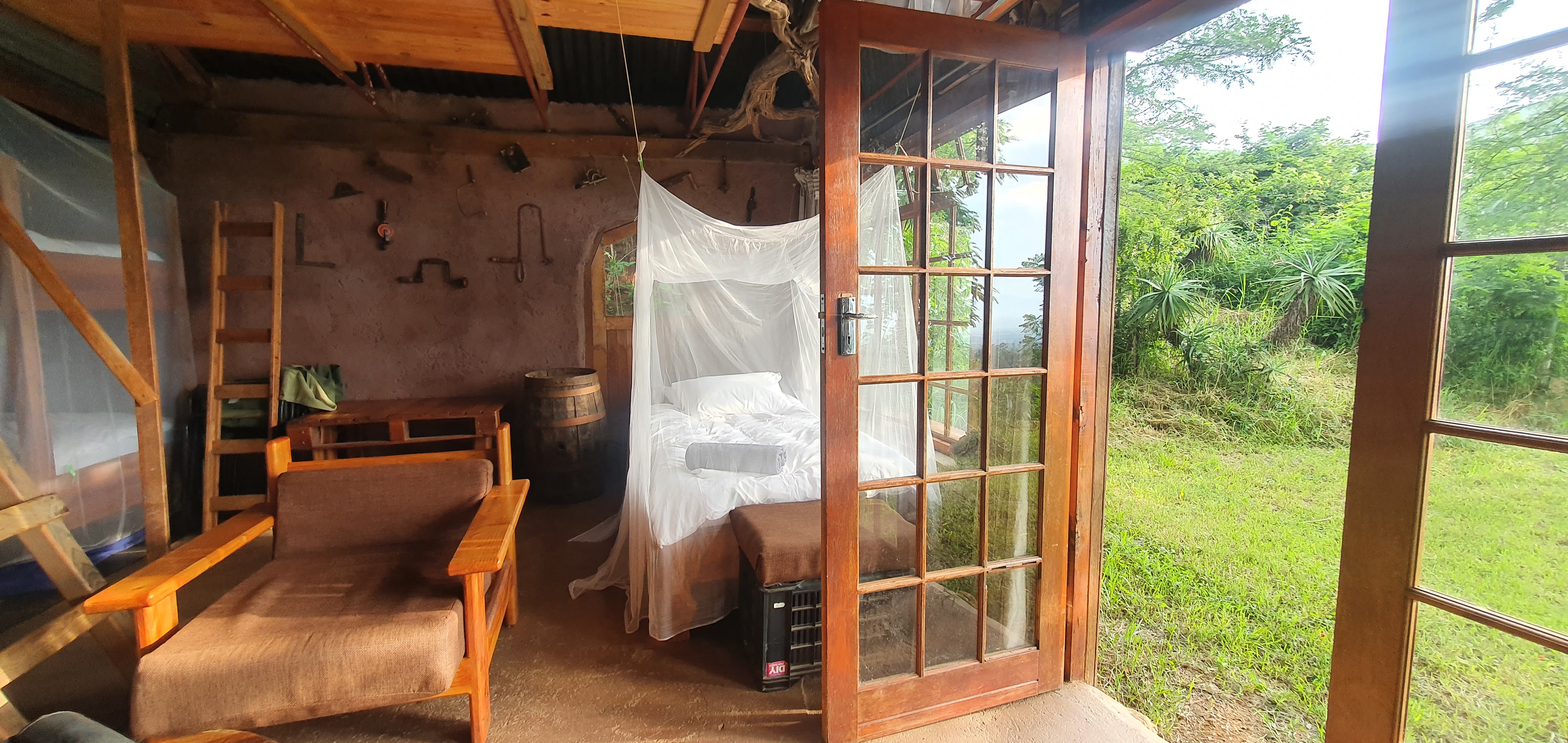
Bushwhacked interior. (Photo: Bridget Hilton-Barber)
We made new best friends with the people from the Lonely Planet guide, who were also staying here, and we all noisily talked life and travel at the same time.
The next morning we resumed our mission and set out along the Barberton Makhonjwa Geotrail. It’s a 38km mountain pass on the R40 between Barberton and the Josefsdal border with Eswatini. There are 11 landscaped picnic spots with viewpoints along the way, each with interpretative panels explaining the rock specimens and geological features.
You can go as geo-nerdy as you like, spending hours delving into things like pillow lavas, volcanic lapilli, banded iron formations, and puddingstone.
The idea is to travel slowly, get out and look, and build a picture of how early Earth evolved about 3.6 billion years ago.
We couldn’t resist getting out at most of the viewpoints. The Makhonjwa Mountains, or the Barberton Greenstone Belt, as they’re geologically known, are serious eye candy. We had snacks, coffee and an essential travel guide called the Barberton Makhonjwa Geotrail by Tony Ferrar and Christopher Heubeck.
It is designed to bring the geology here to life, explaining things like the formation of the continents and the environment in which life first appeared on our planet 3.2 to 3.5 billion years ago.
Different viewpoints showcase different rocks that make up the Barberton Greenstone Belt, and you can go as geo-nerdy as you like, spending hours delving into things like pillow lavas, volcanic lapilli, banded iron formations, and a chert clast conglomerate also known as puddingstone; or the komatiite, formed from extremely hot (1,600°C) lava flows on the sea floor that cooled rapidly, forming big, bladed crystals known as spinifex texture.
Try to imagine that ultrathin sections of black cherts – extremely fine-grained silica laid down as a chemical deposit under water – have revealed small spheres, the fossils of the first bacterial structures: the very Archaeospheroides barbertonsis.
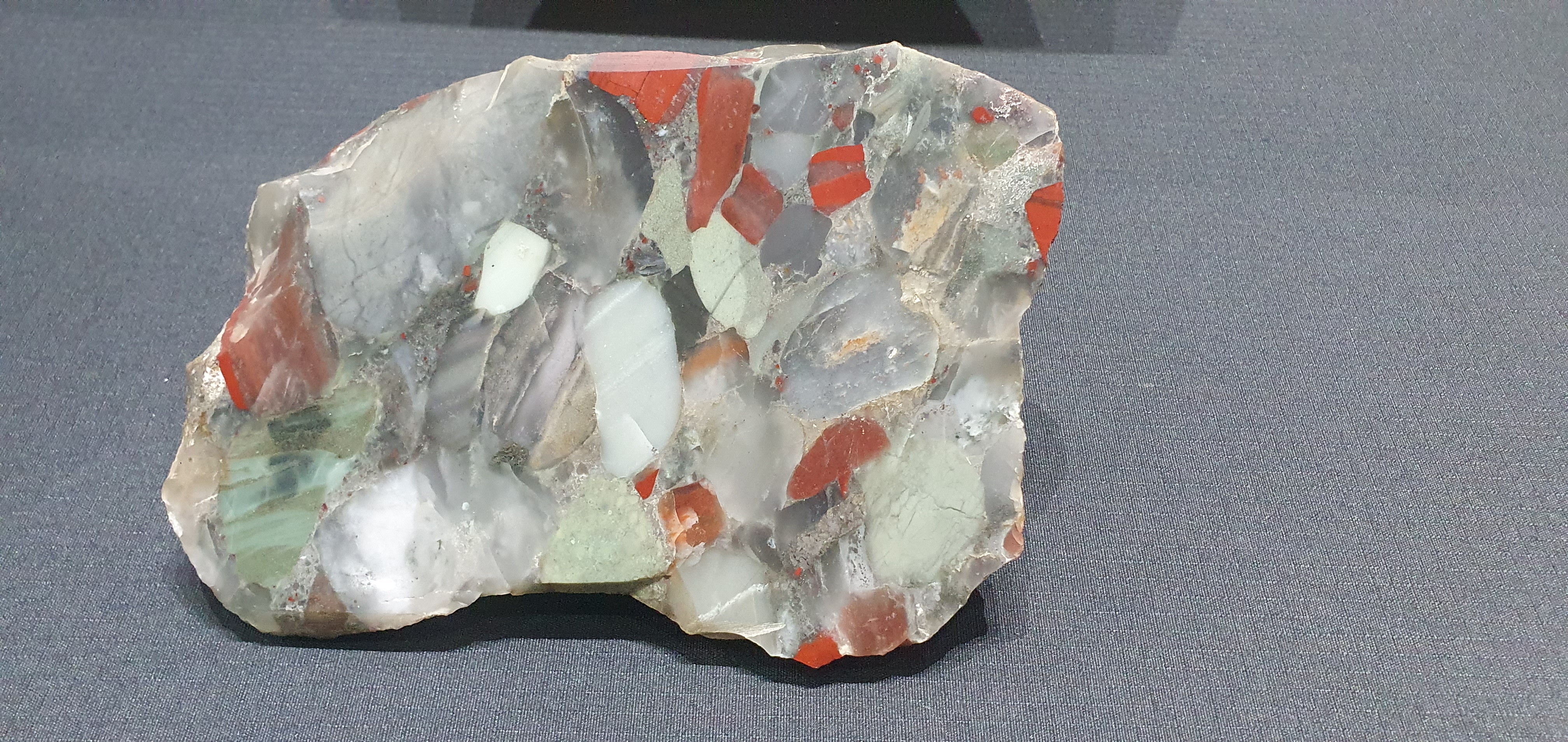
Puddingstone. (Photo: Bridget Hilton-Barber)
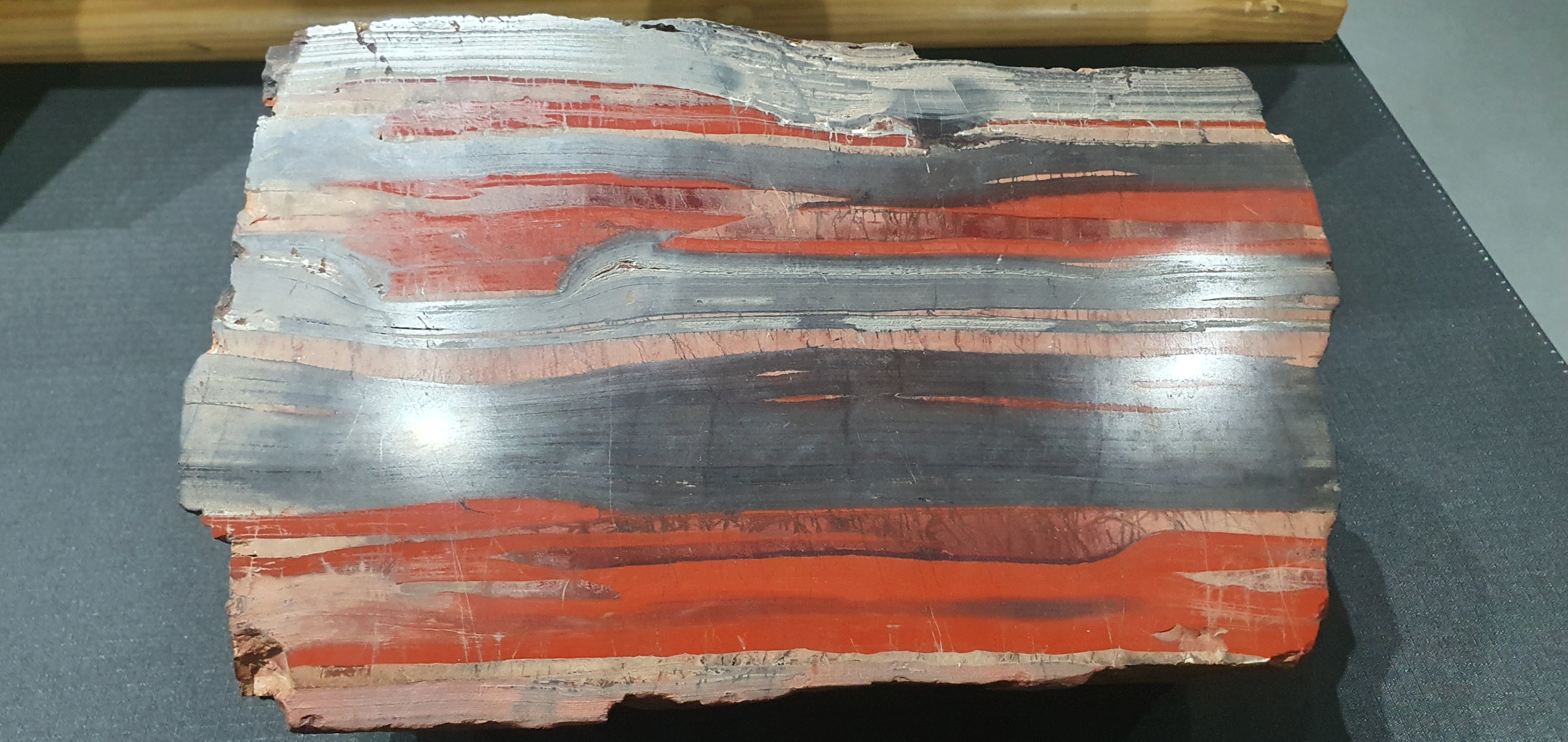
Banded Ironstone. (Photo: Bridget Hilton-Barber)
Depending on how deep you dive, you could spend the whole day exploring the geotrail. It’s one great big, beautiful geology lesson plus the profundity of the first life on Earth. It’s designed as a circular trail and most day-trippers return to Barberton.
We pushed on to Eswatini, and a week later returned via an even more beautiful and remote pass that leads from near the Oshoek-Ngwenya border, runs along a spine of the Makhonjwa Mountains past Msauli village and Manaar, and then connects back to the geotrail. The mountain views along here are just exquisite.
We returned to Bushwhacked Barberton, a peaceful place from which to consider mountains, life and early Earth. When Hugh left for Jozi, I decided to stay another night, and another, and ended up staying a week.
Gold there was aplenty, but scoundrels outnumbered the honest producers. It is a shady chapter in the history of the South African mining industry.
Like many small South African towns, Barberton has a faint air of collapse, but the people are friendly, the pace is gentle and there is a lively gold rush history.
And I felt connected.
It was, after all, my ancestors, Graham, Fred and Henry Barber who struck gold here in May 1884. A month later, after the gold rush had begun, gold commissioner David Wilson came to collect claim fees and broke a bottle of gin over a rock, proclaiming it Barberton. There are still some members of the family who complain about the terrible waste of gin.
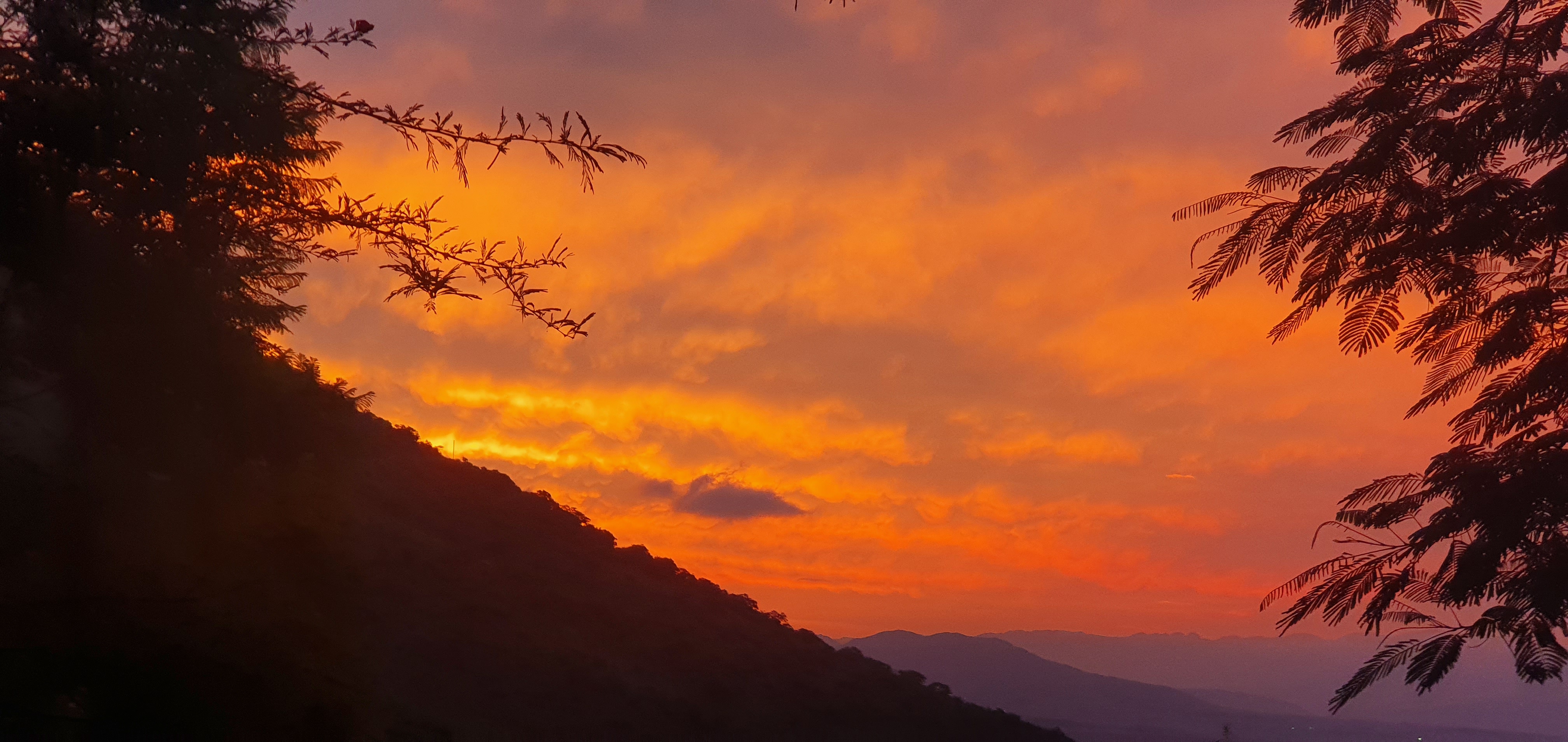
Barberton sunset. (Photo: Bridget Hilton-Barber)
Barberton’s boom time was 1886, when its two stock exchanges traded day and night and dozens of canteens, liquor shops and music halls competed with the mines to make the greatest profit. It was a centre for wild speculation, gambling and fraudulent company promotion. Gold there was aplenty, but scoundrels outnumbered the honest producers. It is a shady chapter in the history of the South African mining industry.
Read more in Daily Maverick: Nine countries, 9,000km and 40-something crazy days later – the end of an incredible African journey
I also spent a few minutes paying my respects to the statue of Jock of the Bushveld in town. Jock is arguably one of South Africa’s most iconic dogs, and the book of the same name tells the story of a man and his dog and their astonishing encounters in the bush while riding between then Lydenburg and Delagoa Bay. Jock ends up getting shot in Mozambique – which, some have argued, makes him an even more appropriate South African icon.
There are some lovely spots to stay in Barberton, both in and outside town. It has all the potential to be a vibey tourism hub, especially since it has such an incredible world heritage site and is close to the Kruger National Park, Mbombela, Eswatini and Maputo. DM
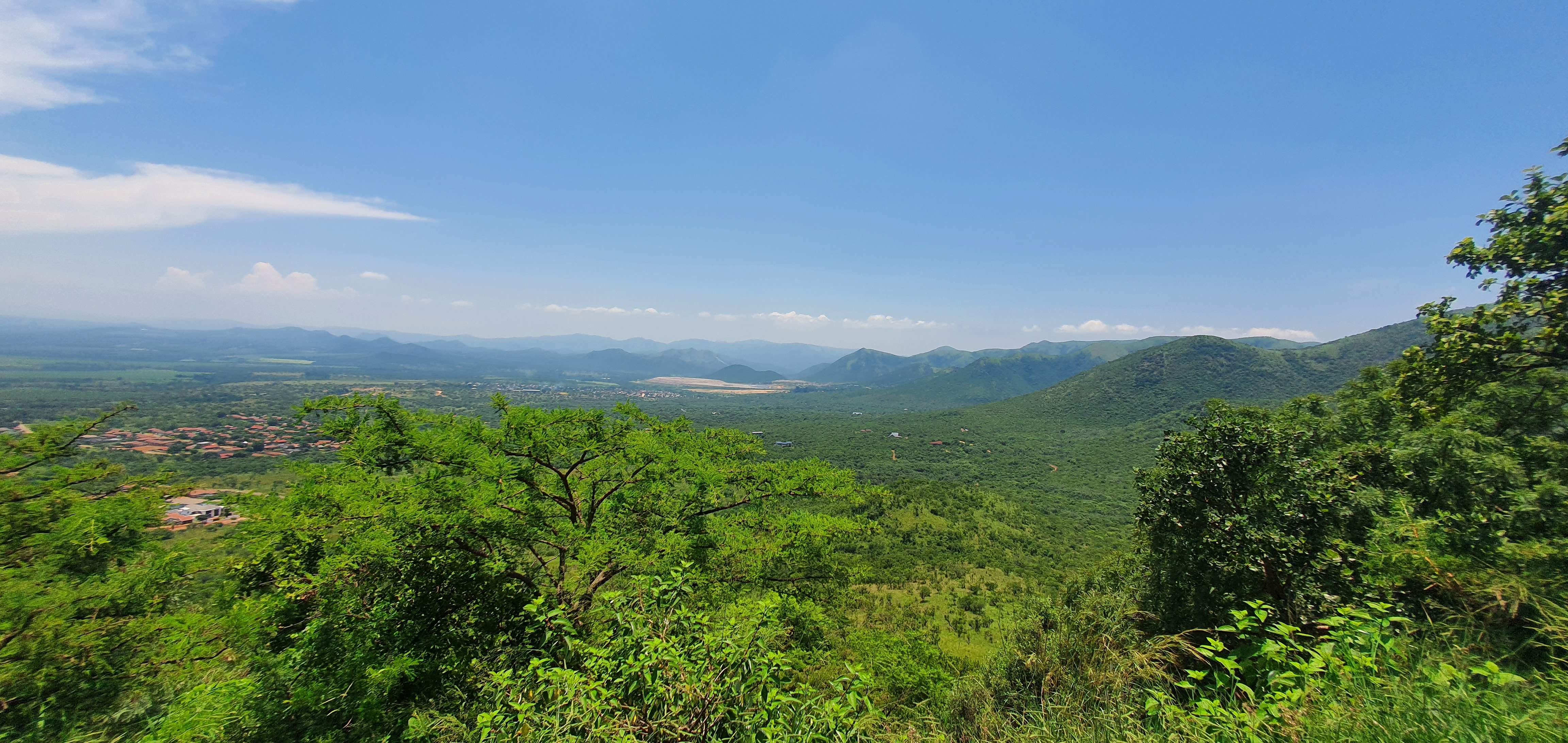
Barberton mountains and valleys. Photo: Bridget Hilton-Barber)
For more information check out:
This story first appeared in our weekly Daily Maverick 168 newspaper, which is available countrywide for R29.




















 Become an Insider
Become an Insider
I’m a certified geo nerd and when I passed through Barberton 18 years ago found a roadworks with blocks of greenstone lying around. One of them became the cornerstone of my new house.